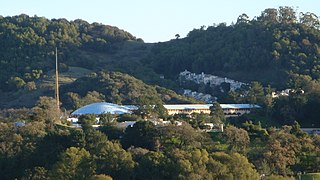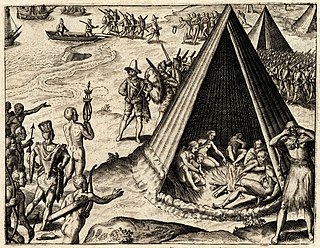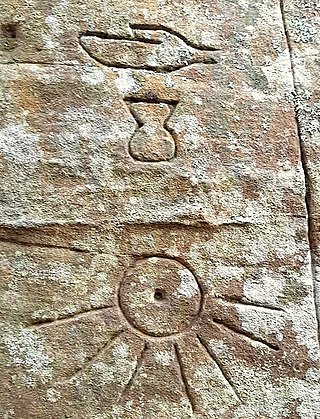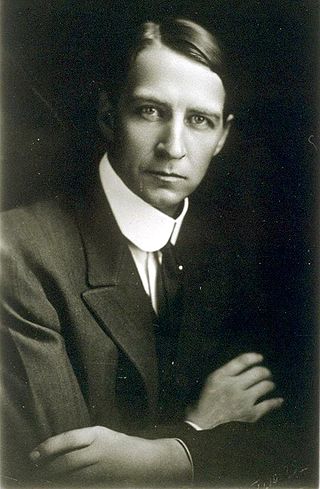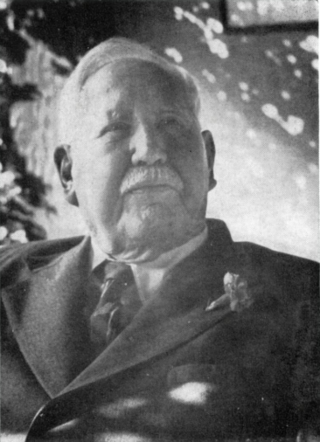Origins
Working for ten years, a team of four researchers pieced together a complete narrative of the out-of-hand joke, The four—Edward Von der Porten, Raymond Aker, Robert W. Allen, and James M. Spitze—published their account in California History in 2002. [1]
Creation
According to the 2002 account, the plate was intended to be a joke among members of a playful fraternity of California history enthusiasts, the Ancient and Honorable Order of E Clampus Vitus ("ECV"). The ECV had originated during the 1849 California Gold Rush and was revived in the 1930s by Carl Wheat, George Ezra Dane, and Leon Whitsell as a fraternity of historians and Western lore enthusiasts. [2] ECV describes itself as "dedicated to the erection of historical plaques, the protection of widows and orphans, especially the widows, and having a grand time while accomplishing these purposes." [3] Pranks at fellow Clampers' expense were a regular part of the group's activities.
George Ezra Dane, an ECV leader, was blamed for initiating the hoax as a joke intended for fellow "Clamper" Herbert Bolton to find. [1] The plate was likely made by George Clark in his workshop in 1917 working with Bolton's design. [2]
The target of the hoax, Herbert Eugene Bolton, had a special interest in the plate. Bolton was a distinguished professor of California history and director of the Bancroft Library at the University of California. Over his career, he exhorted students to look for the plate—and to contact him if they ever heard of an artifact matching the historical description.
Dane initiated the plot. George Haviland Barron, a former curator of American history at the De Young Museum in San Francisco, designed the plate and bought the brass at a nearby shipyard, where a worker cut the plate from modern brass with a modern guillotine shear. George Clark, an inventor and art critic, and appraiser, hammered the letters into the plate with a simple cold chisel. Clark told his wife that the "C.G."—later taken to stand for "Captain General"—before Drake's name was essentially his own signature. As a final mark of the gag, Lorenz Noll (1891–1962) and Albert Dressler (1887–1960) [4] painted "ECV" on the back of the plate in paint visible under ultraviolet light. [1]
Discovery and loss
Von der Porten, Aker, and Allen surmise that the conspirators probably planted the plate in Marin in 1933, not far from the supposed location of Drake's landing. William Caldeira, a chauffeur, found the plate while his employer, Leon Bocqueraz, was hunting near the shores of Drake's Bay with a companion, Anson Stiles Blake. Bocqueraz was a banker, while Blake was a prominent and active Berkeley alumnus. Both were members of the California Historical Society.
Caldeira showed the dirt-covered plate to Bocqueraz, then stowed the plate in the car to investigate later and then forgot about it. Some weeks later, he found it while cleaning the car on the San Rafael Ferry and threw it away on the side of the road in San Rafael—several miles from its original location, but still in the Marin area. This was the first of a series of events that ultimately spun the joke out of the conspirators' control. [1]
Re-discovery and publicity
The plate was found again, three years later, in 1936, by Beryle Shinn, a shop clerk. [5] Shinn showed it to a friend, a Berkeley student, who suggested that he take the plate to Bolton. In February 1937, Shinn brought it to Bolton, which to Bolton was fulfillment of a decades-old professional dream. Bolton compared it to Francis Pretty's [6] contemporaneous description of the plate. He alerted Robert Gordon Sproul, the University of California president, and Allen L. Chickering, the president of the California Historical Society, to the possibility of a major find. Chickering and Bolton negotiated to buy the plate, offering to pay $2,500 (equivalent to $53,000in 2023) and to assume all risk regarding the authenticity of the plate. [1]
Then another series of events took the hoax to the next level. One day after agreeing in principle to sell the plate, Shinn took it back from Bolton, saying he wanted to show it to his uncle and then return it. Bolton and Chickering did not hear from Shinn again for four days. Apparently frightened that they might lose this major opportunity, Chickering moved to quickly buy the plate for $3,500 (equivalent to $74,200in 2023). The plate was then given to the University's Bancroft Library.
Bolton soon announced at a California Historical Society meeting, on April 6, 1937, "One of the world's long-lost historical treasures apparently has been found!... The authenticity of the tablet seems to me beyond all reasonable doubt." Now, having only minimally investigated the plate, Bolton and Chickering had publicly committed themselves, personally and professionally, and their institutions to the authenticity of the plate.
Early doubts
Skeptics pointed out many suspicious elements of the plate. Reginald B. Haselden, a specialist in Elizabethan literature, published a critique of the plate in the September 1937 issue of California History, outlining a list of problems. The spelling seemed modern. The wording did not match normal Elizabethan forms. For example, the plate reads "Queen Elizabeth", not the standard style "Elizabeth, by the Grace of God, Queen of England, France and Ireland, Defender of the Faith". The plate contains the modern forms "the" and "this" instead of the 16th-century "ye" and "y(i)s". Physically, the plate seemed too uniform and the patina suspect. Yet none of these elements by themselves seemed to determine the matter, alternative interpretations of each being available. Haselden's points were immediately disputed. Chickering published a defense of the plate in the same issue of California Monthly.
Conspirators' warnings
The joke, originally intended as an internal Clamper affair, had quickly and suddenly broken out into the public eye. Rather than unveiling their prank at an ECV dinner among friends, revealing the hoax would now be a very public and painful proposition for all involved. As Von der Porten and others wrote, "Private confession could not be kept private, and public confession was fraught with great peril."
The conspirators found a number of ways of trying to tip off Bolton without coming forward. V. L. Vander Hoof, a fellow Clamper and Berkeley professor, made a spoof of the plate a few weeks after the announcement of the find, hoping to show Bolton that modern tools could make a plate that looked remarkably like the "real" plate. Clamper Edwin Grabhorn, a Western history publisher, published a spoof letter from the "Consolidated Brasse and Novelty Company" offering a "special line of brass plates" guaranteed to "make your home-town famous."
Finally, ECV produced a small press run of a book, Ye Preposterous Booke of Brasse, detailing problems with the metal content, wording and spelling. The book even instructed the reader to look for the "ECV" in fluorescent paint on the back and stated outright "we should now re-claim [the plate] as the rightful property of our ancient Order", meaning ECV.
Just before the Preposterous booklet was printed, fellow Clamper, (and the person accused of the hoax) George Ezra Dane, sent Bolton a promotional flyer soliciting preorders. Printed in the flyer was an interesting comment that may have alluded to the truth of the scheme: “As history thunders down the corridors of time, the name of E Clampus Vitus and the Francis Drake Plate will be forever joined.” [7]
"Confirmation"
While Bolton and Chickering continued to defend the plate, doubts and rumors continued to circulate. Sproul, the University president, had become concerned as well. Bolton played down concerns while challenges to the plate’s authenticity were numerous and authoritative, as were demands for analysis of the relic. Journalists at home and abroad, as well as historians and archaeologists, sent requests for at least a good photograph of the plate. Bolton demurred, put off analysis, and did not follow up with experts on specific questions they had about the plate that could help determine its authenticity. A good photograph was not available even by August of 1937 when the editor of Antiquity wrote to Bolton “surely in the case of an object which, if genuine, is of the highest historical importance, at least one really adequate photograph should be made available!” [8] Bolton chose Professor Colin Fink, chair of the Division of Electrochemistry of Columbia University, to authenticate the plate. While the California history community, and certainly Bolton, would have been aware of the Clampers' book of clues, Fink may not have been. In any case, in 1938 Fink and his colleague E. P. Polushkin confirmed the plate as genuine in no uncertain terms: "[I]t is our opinion that the brass plate examined by us is the genuine Drake Plate." [3]
For most observers, this was the definitive statement on the plate's origins. Photos of the plate appeared in textbooks. Copies were sold as souvenirs, and a copy was also displayed in the library of Sir Francis Drake High School in San Anselmo (the only high school named after the explorer). On several ceremonial occasions, copies of the plate were presented to Queen Elizabeth II. Yet rumors of E Clampus Vitus involvement in the plate continued to circulate.



